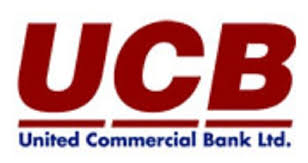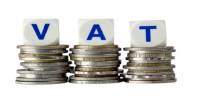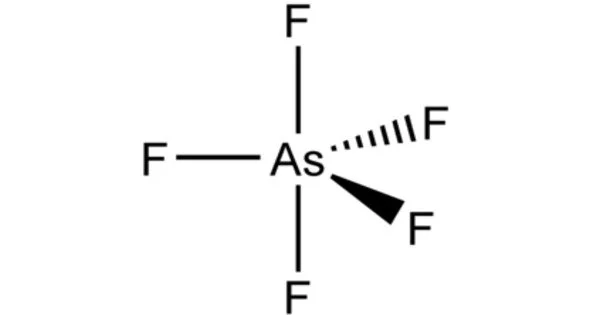INTRODUCTION
Bank plays an important role in the business sectors and in the industrialization of a country. Basically the banks take deposits from the customers against interest or profit and lend it to the borrowers against interest or profit for a cessation period. Under these circumstances of banks offers different interest rates or profit and other options to the customers to remit and deposit their money. These options are very common among the entire bank, but only the customer services and other facilities vary from bank to bank. More than 90% of financial assets of Bangladesh are owned by different category of bank, which is also largely contributing to the growth in the county’s GDP and employment In our country there is Govt. Banks, Semi-Govt. Banks, and Private sector have conventional and Islamic bank of Bangladesh and also it is the third generation private bank in Bangladesh It started its crucial moment/juncture when Bangladesh economy was undergoing through massive economy reforms and pursuing unilateral and multilateral trade liberalization with the backdrop of the World Bank made international monitory fund recommendations. This UCBL with its fifty one branches in strategize locations of the country is providing the best quality services to their customers and clients.
ORIGIN OF THE REPORT
Since practical orientation is an integral part of the BBA degree requirement, I was deputed by the School of Business (SB), SEU to UCBL to take real life exposure of the activities of the Bank. During my internship at UCBL I have come across with different functions of the Bank. From them I have decided to work in the field of general banking, foreign exchange and credit.
This term paper has been originated as the course requirement of the BBA program and I also add some of my own view point. I hope the report will give a clear idea about the activities, “Foreign Exchange operation of the United Commercial Bank Ltd”.
OBJECTIVES OF THE REPORT
The objective of this program and the report can be divided into two types, such as broad objectives and specific objectives.
Broad Objectives: The main objective analysis financial performance of bank and foreign exchange trade between import and export customers provide service by the bank and analysis of bank risk content of international trade and exchange.
Specific objectives:
- To show banks overview and its product & service.
- To analyze income statement and balance sheet estimate the NIM, NPM, EPS, ROA & ROE Ratio.
- To analyze this ratio for knowing its growth & position.
- To analyze the result of this ratio for knowing banks performance better or worse.
- To analyze DuPont position for knowing overall return on equity.
- To analyze the between import and export risk activates.
- To know the attitudes, perceptions and concerns of Bangladeshi bank towards FXRM.
- To know foreign exchange risk management policy- making and control process adopted by the banks which use derivatives, in managing foreign exchange exposure.
- To identify the risk involved in foreign exchange proceedings.
- To customer suffering financial loss as result of the default of another customers sale contact.
- The risks involved in repatriation of export proceedings.
- To know the regulation and deregulation regarding Foreign Exchange in Bangladesh.
- To know the banks foreign exchange department service.
METHODOLOGY OF THE STUDY
In preparing this report, both primary and secondary sources of information have been used.
For collecting primary data,
- Discussion with the respective bank’s officers
- Sharing practical knowledge of officials
- direct communication with the clients
- exposure on different desk of the bank
- File study etc.
The secondary sources were-
- Annual Report of UCBL & Website of UCB Limited
- periodicals published by the Bangladesh Bank
- Relevant bank documents, papers, client/ customer and bank Journals
- Different corporate files
- Different Financial book
LIMITATIONS
To make a report various aspects and experiences are needed. But I have faced some barriers for making a complete and perfect report. These barriers or limitations, which hinder my work, are as follows:
- All the concerned personnel of the bank have not been interviewed.
- Financial performance is not shown in well arranged within short time.
- Lack of experience and knowledge of foreign exchange.
- Desk work is very complicated within short time.
- Inadequacy and lack of availability of required Current data.
- Financial statement of 2011 as on June 30 is unaudited.
- The documentation part of the Letter of Credit with regard to export and import is quite complicated and huge formalities.
I was placed for only around 3 months of time & working like a regular employee hindered the opportunity to put the effort for the study. The time span was not sufficient enough to learn all the activities of the organization properly. Therefore, it was very difficult to carry out the whole analysis
CHAPTER-2
Conceptual Issues
ORGANIZATION OVERVIWE:
United Commercial Bank Limited (UCBL) is a Bangladesh based financial institution that provides banking services. The services include personal and business banking, loans, credit cards, online banking and money transfer services. The bank primarily operates in Bangladesh, where it is headquartered in Dhaka.
With its firm commitment to the economic development of the country, the Bank has already made a distinct mark in the realm of Private Sector Banking through personalized service, innovative practices, dynamic approach and efficient Management. The Bank, aiming to play a leading role in the economic activities of the country, is firmly engaged in the development of trade, commerce and industry thorough a creative credit policy.
History of UCBL
United Commercial Bank Limited incorporated on 26 June 1983 as a public company with limited liability under the Companies Act 1993. The bank obtained permission to commence business with effect from 26 June 1983 and started banking operations on 29 June 1983 with an authorized capital of Tk. 100 million divided into 1 million ordinary shares of Tk. 100 each.
Management
The Bank has in its Management a combination of highly skilled and eminent bankers of the country of varied experience and expertise successfully led by Mr. M. Shahjahan Bhuiyan, a dynamic banker, as its Managing Director and well educated young, energetic and dedicated officers working with missionary zeal for the growth and progress of the institution
Vision
United Commercial Bank Limited wants to be the market leader in the local banks in Bangladesh. Their target is to be the highest profitable bank in local banking sector.
Mission
- To provide quality services to customers
- To set high standards of integrity
- To make quality investment
- To ensure sustainable growth in business
- To ensure maximization of Shareholders’ wealth
- To ensure human resource development to meet the challenges of the time
Strategies
- To strive for customers best satisfaction & earn their confidence
- To manage & operate the Bank in the most effective manner
- To identify customers needs & monitor their perception towards meeting those requirements
- To review & updates policies, procedures & practices to enhance the ability to extend better services to the customers
- To train & develop all employees & provide them adequate resources so that the customer’s needs are reasonably addressed
- To promote organizational efficiency by communicating company plans, polices & procedures openly to the employees in a timely fashion
- To cultivate a congenial working environment
- To diversify portfolio both the retail & wholesale markets
Motto
Values of the UCBL
Put customer first
Emphasize on professional ethics.
Maintain quality at all levels
Branch information of UCBL
Year | 2007 | 2008 | 2009 | 2010 | 2011 | 2012 |
No. of Branches | 80 | 80 | 84 | 84 | 107 | 110 |
Special Features of the UCBL
It has been performing commercial banking activity and striving to introduce dynamic Banking functions.
It is the pioneer in introducing and launching different customer friendly deposit schemes to tap the savings of the people for canalizing the same to the productive sectors of the economy.
For uplifting the standard of living of the limited income group of the population the Bank has introduced Consumer Credit Schemes by providing financial assistance in the form of loan to the consumers for procuring household durables, which have had encouraging responses.
The Bank is committed to continuous research and development so as to keep pace with modern technology.
The operations of the Bank are fully computerized so as to ensure quick, prompt flawless and services to the customers.
The Bank has introduced camera monitor system (CCTV) to strengthen the security services inside the Bank premises.
Rating
United Commercial Bank Limited was rated by Credit Rating and Information Services Limited (CRISL). In their report on April 2009, they rated the Bank as AA- for long term and ST-2 for short term. The gradation in long term rating has been done in consideration of its good capital adequacy, appropriate asset quality, increased non funded business and sound liquidity position. The short term rating indicates high certainty with regard to the obligators capacity to meet its financial commitments.
BOARD OF DIRECTORS:
Chairman
Mr. Aktaruzzaman Babu
Vice-Chairman
Mr Kazi Enamul Hoque
Chairman, EC
Hajee Yunus Ahmed
Chairman, Audit Committee
Mr.Md. Jahangir Alam Khan
Managing Director
Mr. M. Shahjahan Bhuiyan
CHAPTER-3
Database
UCBL Remittance
UCBL is authorized to deal in foreign exchange business. As an authorized dealer, a bank must provide some services to the clients regarding foreign exchange and this department provides these services. includes all sale and purchase of foreign currencies on account of Import, Export, Travel and other purposes. However, specifically foreign remittance means sale & purchase of foreign currencies for the purposes other than export and import.
Remittance Procedures:
The foreign remittances are affected either through the respective bank’s foreign branches or correspondents. All foreign remittance transactions are grouped into two broad categories.
There are two types of remittance:
Inward Remittance;
Remittances of foreign currency being received in the country from abroad are called Inward Foreign Remittance. It covers purchase of foreign currency in the form of Foreign T.T, D.D and bills, T.C etc. sent from abroad favoring a beneficiary in Bangladesh. Purchase of foreign exchange is to be reported to Exchange Control Department of Bangladesh Bank on Form-C.
Outward Remittance:
Foreign currency being made out abroad may be termed as Foreign Outward Remittance. That means, remittance in foreign currency that goes out abroad is called Foreign Outward Remittance. It covers sales of foreign currency through issuing foreign T.T, Drafts, Travelers Check etc. as well as sell of foreign exchange under L/C and against import bills retired.
Financial ratio:
Financial ratios are useful indicators of a firm’s performance and financial situation. Financial ratios can be used to analyze trends and to compare the firm’s financials to those of other firms. Ratio analysis is the calculation and comparison of ratios which are derived from the information in a company’s financial statements. Financial ratios are usually expressed as a percent or as times per period. Ratio analysis is a widely used tool of financial analysis. It is defined as the systematic use of ratio to interpret the financial statements so that the strength and weaknesses of a firm as well as its historical performance and current financial condition can be determined
Explanation of Balance sheet & income statement
Balance sheet is a list of the accounts having debit balance or credit balance in the ledger. On one side it shows the accounts that have a debit balance and on the other side the accounts that have a credit balance. The purpose of a balance sheet is to show a true and fair financial position of a business at a particular date. Every business prepares a balance sheet at the end of the account year. A balance sheet may be defined as:
- It is a statement of assets, liabilities and owner’s equity on a particular date.
- It is a statement of what a business concern owns and what it owes on a particular date. What is owns are called assets and what it owes are called liabilities.
- It is a statement which discloses total assets, total liabilities and total capital of a concern on a particular date.
- It is a statement where all the ledger account balances which remain open after the preparation of trading and profit and loss account, find place.
Balance sheet is so called because it is prepared with the closing balance of ledger accounts at the end of the year. It has two sides – assets side or left hand side and liabilities side or right hand side. The accounts have a debit balance are shown on the asset side and those have a credit balance are shown on the liabilities side and the total of the two sides will agree.
Contents of Balance Sheet
Assets:
Assets mean all the things and properties under the ownership of the business i.e. building, plant, furniture, machinery, stock, cash etc. Assets also include anything against which money or service will be received i.e. creditors accrued income, prepaid expenses etc.
Broadly speaking Assets represents resources which are of some value to the firm. They have been acquired at a specific monetary value by the firm for the conduct of its operations. Assets are classified as follows under the companies act:
Classification of Assets:
Assets may be classified as follows:
Real Assets:
Assets which have some market value are called real assets, e.g. building, machinery, stock, debtors, cash, goodwill, etc.
Fixed Assets:
Assets which have long life and which are bought for use for a long period of time are called “fixed assets”. These are not bought for selling purposes, e.g. land, building, plant, machinery, furniture etc. Fixed assets are again sub-divided into two:
- Tangible Assets: Assets which have physical existence and which can be seen, touched and felt are called “tangible assets”, e.g. building, plant, machinery, furniture etc.
- Intangible Assets: Assets which have no physical existence and which cannot be seen, touched or felt are called “intangible assets”, e.g. goodwill, patent right, trade mark etc.
Current Assets:
Assets which are short-lived and which can be converted into cash quickly to meet short term liabilities are called “current assets”, e.g. stock debtors, cash etc. Such assets change their form repeatedly and so, they are also known as circulating or floating assets. For example, on purchase of goods cash is converted into stock and on sale of goods, stock is converted into debtors, on collection from debtors, debtors take the form of cash etc.
Out of current assets those which can be converted into cash very quickly or which are already in the form of cash are called liquid or quick assets e.g. debtors, cash in hand, cash at bank etc.
Investments:
These are financial securities owned by the firm. Some investments represent long-term commitment of funds. Other Investments are short-term in nature and may rightly be classified under current assets for managerial purposes.
Chapter-4
Brief Overview of the Topics & Findings of the study
Foreign Exchange markets
UNITED COMMERCIAL BANK Limited serve as financial intermediaries in the foreign exchange market currency convert by the selling and buying or import or export currencies to accommodate customers. The speculate on foreign exchange currency movement by taking long positions in some currencies and short positions in others and provide forward contact to customers, options to customers. The banking engages in foreign security transactions for their customers. The Exporters exchange their customers based by allowing customers to pay in their local currency and the importers have the upper hand when they take the responsibility to pay a foreign suppliers in local currency and building hedging cost into pricing. Diversity your international suppliers base reduces the risks associated with doing business with a limited number of vendors, in a limited numbers of regions.
Mark to Market
This is a process through which the treasury back-office values all outstanding positions at the current market rate to determine the current market value of these. This exercise also provides the profitability of the outstanding contracts. The treasury back office gathers the market rates from an independent source i.e. other than dealers of the same organization which is required to avoid any conflict of interest.
Valuations
The process of revaluing all positions at a pre-specified interval is known as valuation. Though this exercise, an organization determines that if they are to liquidate all the positions at a given time, at what profit or loss they would be able to do so. This function is carried out by the treasury back-office by gathering revaluation rates. Ideally, the treasury back-office should gather such rates from sources other than from the dealers of the same organization to avoid any conflict of interest. Dealers’ are required to have their own P&L estimate which must be tallied with the ones provided by the treasury back-office. Any unacceptable difference between these two must be reconciled to an acceptable level.
Centralized foreign Exchange and money market activities
A financial organization’s balance sheet is formed from its core activities. However, as perfection in the balance sheet is almost impossible, organizations require access to the wholesale market to plug in gaps and mismatches though, wholesale activities are primarily for managing gaps and mismatches, this is also done for proprietary trading and arbitrage purposes. As the two types of wholesale activities i.e. foreign exchange and money market are heavily interdependent, these are required to be housed in the same area. This means that an organization’s foreign exchange and money market activities are to be unified in the same department for efficiency.
Market Management Units
- Review policy at least annually and update as required
- Independently identify all relevant market risk factors for each risk taking unit
- Develop proposals for the independent market risk limits/ triggers, in conjunction with the risk-taking units.
- Ensure that limits/ triggers are appropriately established
- Independently monitor compliance with established market risk limits/ triggers.
- Ensure ongoing applicability of the market risk limits/ triggers formally review framework at least annually.
- If applicable, review and approve limit frameworks, as well as limit change requirements.
- Review and approve any temporary limit requirements.
- Recommend corrective actions for any limit excesses.
Maintain documentation of limit breaches, including corrective action and resolution date.
Foreign exchange Risk management:
Foreign exchange risk is defined as the potential change in profit/loss due to change in market prices. Today’s financial institutions engage in activities starting from imports, exports and remittances involving basic foreign exchange and money market to complex structured products. Within the Bank, Treasury department is vested with the responsibility to measure and minimize the risk associated with bank’s assets and liabilities.
All treasury functions are clearly demarcated between treasury front office and back office. The front office is involved only in dealing activities and the back office is responsible for all related support and monitoring functions. Treasury front and back office personnel are guided as per Bangladesh Bank core risk management and their job description. They are barred from performing each other’s job. As mentioned in the previous section, ‘Treasury Front Office’ and ‘Treasury Back Offices’ have separate and independent reporting lines to ensure segregation of duties and accountability but also helps minimize the risk of compromise.
Branch Foreign Exchange Transactions
These activities revolve round the performance of the following functions:-
– Export and import financing
– Purchase and sale of foreign exchange currencies
– Documentary credit transactions and collections
– Credit Insurance
– Ancillary Functions in foreign exchange in foreign exchange department
– Receipt foreign remittance for customers account
– Credit and collections.
Value at risk
Value at Risk, commonly referred to by its acronym VAR, is a statistical measure of the worst probable loss on a position or portfolio of positions that can be expected over a specified period of time to a given level of confidence. The calculation of VAR requires a number of inputs:
– Market value of the position
– Daily volatility of the currencies
– Holding period
– Level of confidence
One popular approach to assessing transaction exposure is the Value-At-Risk (VAR) technique. The VAR methodology can be employed to assess the maximum likely loss on the value of the MNC’s net cash flows denominated in one or more foreign currencies for a given time period. The desired time period can vary from as short as 1-day to as long as 1-week or 1-month (or even longer). The estimates of the maximum loss can then be used to assess if hedging is desirable.
Value at risk , Maximum one –day loss = E(et) – (1.65 * σi or p)
where ,
1. The expected percentage change in the currency’s value for the relevant period = E(et)
2. The Z-score corresponding to the desired confidence level used (i.e., 95%, 97.5 %,…) in this case at 95% = 1.65
3. The standard deviation of the percentage change in the currency’s or portfolio of currencies value over previous period = σi or p
Overall, a portfolio of currencies whose values are highly unpredictable via the U.S. dollar (i.e., the standard deviations in percentages changes in the dollar exchange rates are high) will have a high level of transaction risk.
Business trade of import and export
Business related activities as import and export exchange rate, currencies, timing delay payment, credit instruments and payment of foreign contact L/C and documentary interest rate of bank.
– The quality of The Foreign Exchange Department service of United Commercial Bank Limited.
Table:11 Foreign exchange Department service
| Result | Frequency | Percentage |
| Excellent | 30 | 46.2% |
| satisfaction | 20 | 30.8% |
| Moderate | 10 | 15.4% |
| Dissatisfaction | 5 | 7.7% |
| 65 | 100 |
Analysis
Here I find that among 65 (100%) clients 30 (46%) are very much satisfied with the purchase and export and import department of UCBL Bank Ltd where as only 5(7.7%) is very dissatisfied with the performances. But average percent is good. Here we can see that 5 clients are dissatisfied. The reason that he was dissatisfied was because he wanted more time to pay his installments and due outstanding balance. But UCBL did not allow this.
Export and Import business :
UCB achieve a significant growth in Export and import business. Its growth rate increase day by day. The growth of Export and Import business is one of the key attributing towards the overall bank profitability.
Table: Export Businesses
| year | 2008 | 2009 | 2010 | 2011 | 2012 |
| Export Business | 50,712 | 38,519 | 36,500 | 27,230 | 20,803 |
Interpretation:
We can see that Export business increase every year in a satisfactory way. For this reason its Expot business growth rate increases every year. Only 2008 export business decrease than 2009. But it recover in 2012.
Import Table:
| year | 2008 | 2009 | 2010 | 2011 | 2012 |
| Import Business | 86,667 | 58,857 | 60,009 | 60,329 | 39,863 |
Table: Import Businesses
|
|
|
|
|
Interpretation:
We can see that Import business fluctuated every year. But in 2010its highly increase. For this reason its growth rate also increases.
Chapter five
Conclusion & Recommendation
Recommendation
The bank should be considered on the foreign exchange risk recommendations are made which are benefit United Commercial Bank limited and customers.
- Foreign Exchange rate which are factors business related imports and exports, currencies, payments of timing, adverse rate movement have on your profitability. Also should be identify the product and managing the buy or sell your currency in the spot market, foreign currency.
- Locks into fixed rates and use flexible products.
- Should understanding the exposure, understanding the products, development of strategy, implementation of risk management.
- Key sensitivities to and interest rate and/or FX positions and Capital treatment of market risk under Basel II.
- Setting and monitoring transaction and portfolio limits, assets liability management limits and regulatory requirement.
The others banking sector should be improve as list the below points
- United Commercial Bank limited should increase their interest on the document retirement then their import business can be increase. Their Local export and import interest is 16%. If they decrease interest on 12-14% then their import business can be increase.
- If United Commercial Bank limited increases number of employee they can provide more satisfactory service to the customers.
- United Commercial Bank ltd should increase the number of PCs with updated hardware and software.
- To create better client the bank should increase the amount of consumer loans in a short-term basis.
Conclusions
UCBL financial performance & position is better every year. Its growth rate increase day by day. We can see that compare its performance from previous year to current year. And United Commercial Bank limited are doing business, it’s successfully, their well performance in foreign exchange, foreign exchange risk has been able to reduce and low risk performance better than other banks. The more effectively banks foreign exchange business, the more likely they will more productive and business transaction.
The Foreign exchange on term paper of comes from diverse areas as spot transaction forward rate, currency swaps exchange rate movement in profit and loss, protection against exchange rates fluctuation in foreign exchange rate. Risk Management underscores the fact that the survival of an organization depends heavily on its capabilities to anticipate and prepare for the change rather than just waiting for the change and react to it. The objectives of risk management is not to prohibit or prevent risk taking activity, but to ensure that the risks are consciously taken with full knowledge, clear purpose and understanding so that it can be measure and mitigated. It also prevents an institution from suffering unacceptable loss causing an institution to fail or materially damage its competitive position
To the extent the bank can take risk more consciously, anticipates adverse change and hedges. Accordingly, it becomes a source of competitive advantage , as its can offer its products at a better price than its compositions .What can be measured can mitigation is more important than capital allocation against inadequate risk management .Basel proposal provides proper starting point and systems attuned to risk management practices
The effectiveness of risk management in banks depends on efficient management system, computerization and net working of the branch activities.
Bibliography
Books:
Financial Management
Financial Markets and institution
International Financial Management
Reports:
Annual Report of United Commercial Bank Ltd. (2010, 2009, 2008, 2007)
Data from published reports of Bangladesh Bank
Core Risk management in banking
Website:
Website of United commercial bank ltd Bank Limited
Website of Bangladesh Bank Limited
Others:
Different Books, Journals, Periodicals, Lecture note etc.
















